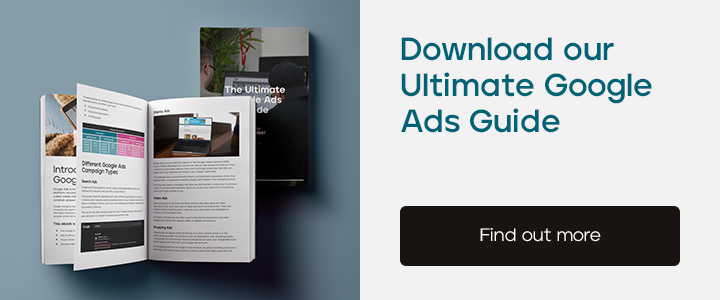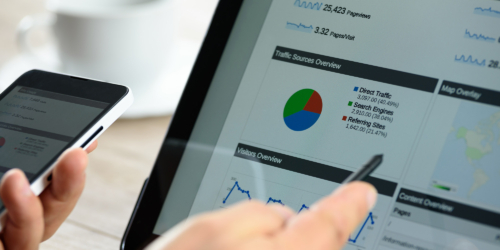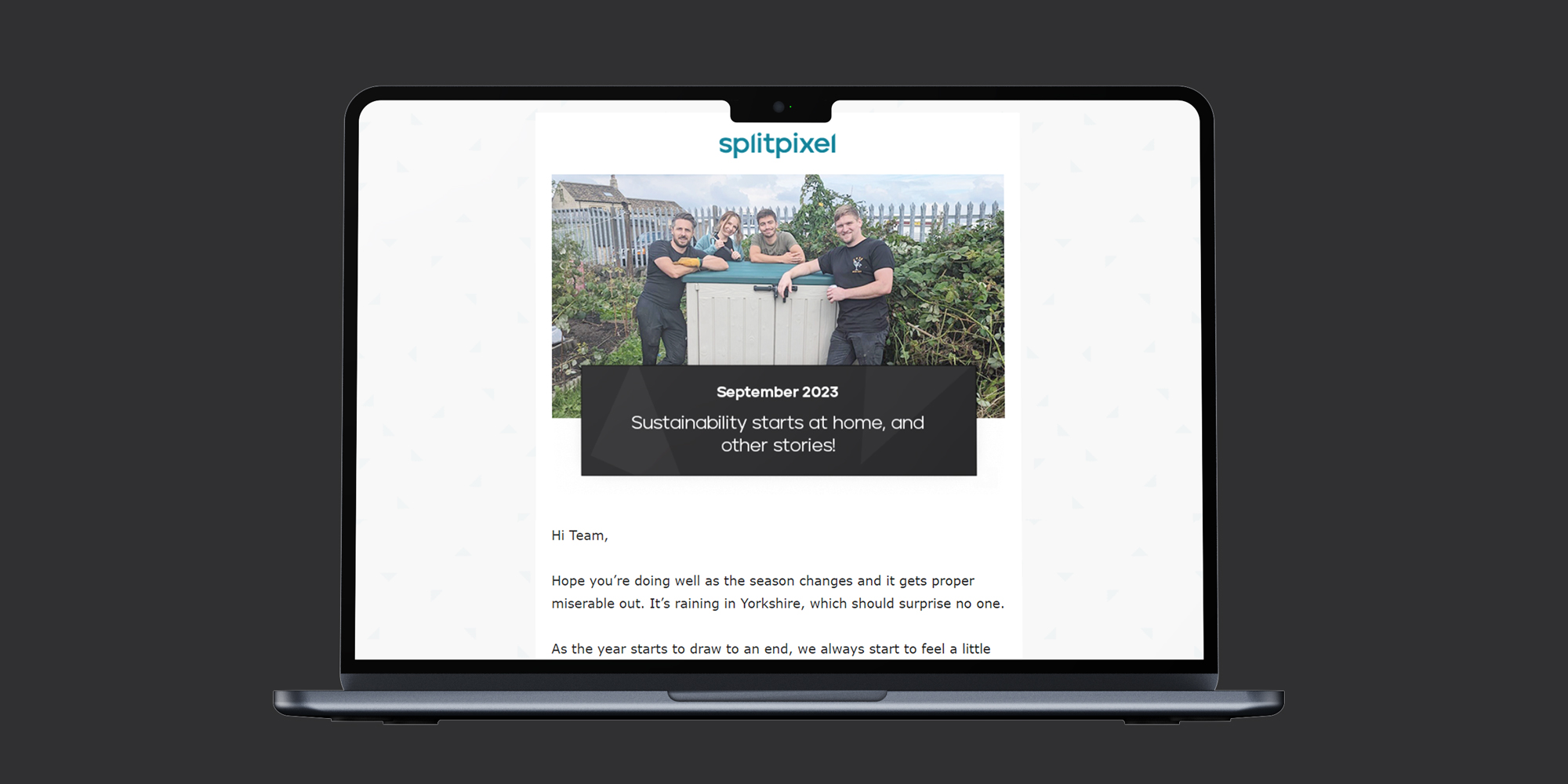You may have already seen that we’ve covered the basics of Google Ads conversion tracking in a previous article.
Now it’s time to take things a step further and dive into a more advanced, but incredibly valuable, method for tracking Google Ads performance. Introducing…Offline Conversion Tracking.
What Is Offline Conversion Tracking?
If you run an eCommerce business, it can be much more straightforward to track purchases directly arriving from your website. Think of Amazon. You visit the website via a Google Ad, you buy an item for £50, that £50 value will then pass in the conversion data.
But for lead generation businesses, where conversions often happen after someone submits a form or makes an enquiry on your website, the journey for a customer often won’t end on your website, and can in fact take months, even years to convert into a customer. That’s where offline conversion tracking comes in.
Let’s say a user fills out a form to:
- Request a quote
- Book a demo
- Download a resource
- Enquire about your services
Or even makes a phone call to enquire.
That’s the first step the prospect will take to contact you.
From there, you might follow up via phone, email, or meetings, all touch points happening away from your website. At some point, that lead will (hopefully) convert into an actual paying customer and sale, but that won’t be tracked by the initial form submissions we mentioned above i.e. your quote form or book a demo form conversion inside Google Ads.
Offline conversion tracking bridges that gap. It allows you to track what happens after the initial website interaction and send that data back into your Google Ads account. This way, you’re not just tracking form submissions, you’re tracking sales and actual revenue.

How Offline Conversion Tracking Works
Here’s a simple 8-step process of how offline conversion tracking works.
- User clicks your Google Ad
- They fill out a website form
- A GCLID (Google Click Identifier) from the Google Ads URL is passed with the form submission data
- Sales progression with prospect (emails, calls, quotes, meetings, etc)
- The user converts into a customer, with a sales value
- You upload the GCLID data back to Google and it matches this with the original click
- Google uses the signals from the offline conversions to try and reach similar users
- Overall lead quality from Google Ads increases
Here’s a simple diagram that shows how this works in practice…
Why Is Offline Conversion Tracking So Important?
There are two key reasons every lead generation business should implement offline conversion tracking in Google Ads:
1. Smarter machine learning

Google’s bidding strategies rely on data to optimise its campaigns.
To name a few examples, if you choose the Maximise Clicks bidding strategy, Google will aim to get as many clicks as possible within your budget.
If you opt for Maximise Conversions, Google will try to drive the highest number of conversions.
And if you go with Maximise Conversion Value, Google will focus on generating the most valuable conversions possible.
This article isn’t about bidding strategies. But here’s where offline conversion tracking becomes crucial. It gives Google’s algorithms and machine learning the right kind of data to optimise against.
If you’re tracking form submissions as conversions, that’s a start. But what if 90% of those submissions are spam, low-quality leads, that never convert?
Without offline conversion tracking, Google doesn’t know the difference. It will keep optimising towards quantity rather than quality.
With offline conversion tracking, you can feed actual sales and values back into Google Ads.
That means Google optimises for actual revenue-generating conversions, not just any form submission or phone call.
You can then use bidding strategies like Target ROAS (Return on Ad Spend) or Maximise Conversion Value more effectively.
So, instead of Google simply trying to get as many form submissions as it can within your budget, it will bid more effectively and try to get more conversions that are more likely (based on Google’s signals) to lead to higher value conversions.
Even assigning a ‘potential’ value to quotes can be useful. If you quote for an enquiry, this likely signals a higher quality lead than someone who simply downloads a free resource.
Your campaigns get smarter over time, chasing quality rather than just volume.
2. Better reporting and ROI measurement

Spending money on Google Ads without knowing your return can cause a lack of direction and lead to poor decision-making, along with wasted budget.
You’re investing money into a channel, but the board wants to see the ROI from that channel. Without proper tracking, it becomes much harder to justify the spend, and before you know it, your Google Ads budget could be pulled.
Let’s say you are achieving a cost-per-conversion of £10 for a product that has a profit of £200, this may appear positive at first glance, but what if none of those leads become actual customers, what if they were all spam enquiries – cost-per-conversion can become a bit of a vanity metric!
Offline conversion tracking helps you understand the specific campaigns, ads, keywords, and landing pages that have driven commercial value. That’s when your reporting becomes powerful by allowing you to;
- See how much return your Google Ads are actually driving
- Make more informed data driven decisions
- Showcase to your team a more accurate ROI, enabling you to scale up with more confidence.
If you’re running lead generation campaigns on Google Ads, Offline Conversion Tracking can be a real game-changer.
Let’s take a look at some real-life examples for some of our clients here at Splitpixel.
Offline Conversion Tracking Case Studies
SAAS organisation
- Quote values over 3 months
- Including our agency fees, Quote Return On Ad Spend equals roughly 6,724%
Please note that since their sales cycle can exceed three months, these figures represent lead values rather than confirmed sales. It simply illustrates the pipeline value generated from their Google Ads campaigns.

Telecommunications Organisation
- Quote Values over 3 months
- Including our agency fees, Quote ROAS equals 706%

Final thoughts
Conversion tracking is arguably the most important part of your Google Ads setup.
However, Offline conversion tracking takes your campaign from guesswork to growth, by giving Google (and you) the full picture of how much has been generated from your Google Ads campaigns.
This is particularly valuable for lead generation campaigns, where the sale may occur some time after the initial website interaction.
Don’t miss out – if you’d like to find out more about offline conversion tracking or would like help getting it set up, contact our friendly PPC team today – we’d love to have a chat!




